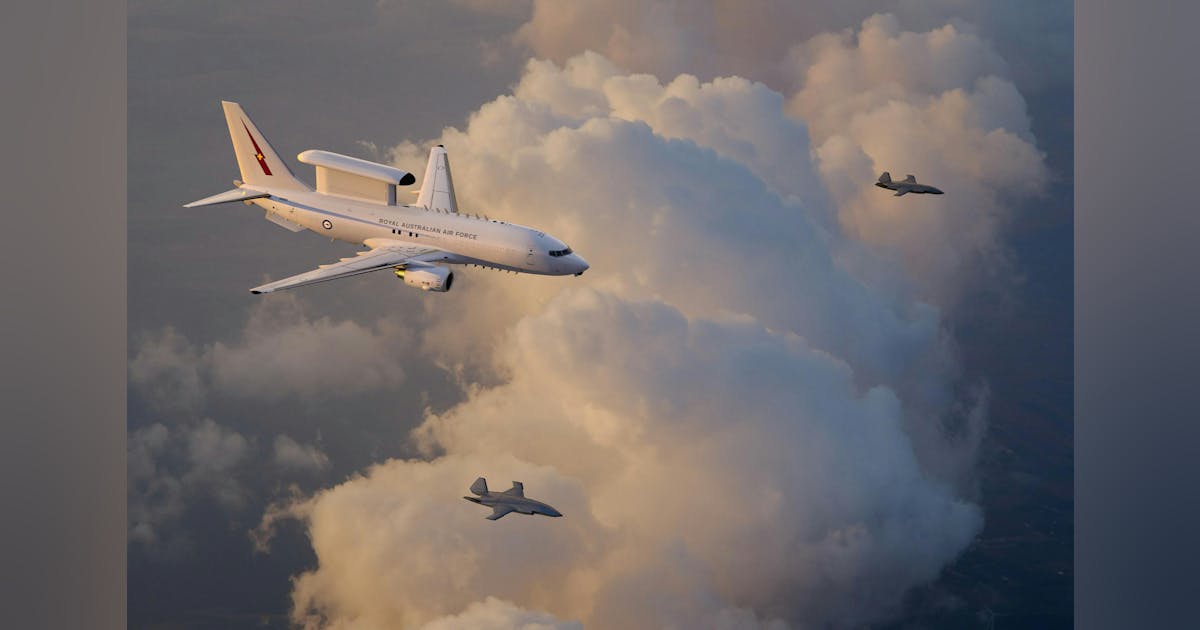Boeing and RAAF’s Game-Changer: Airborne Control of Multiple MQ-28 Ghost Bat Drones
How Australia and Boeing Redefined the ‘Loyal Wingman’ Era in Combat Aviation
Picture the future of air combat: pilots seamlessly directing a squad of AI-enhanced drones from airborne command centers. In June 2025, Boeing and the Royal Australian Air Force (RAAF) made significant strides toward this vision by successfully controlling multiple MQ-28 Ghost Bat drones from a single E-7A Wedgetail aircraft. This technological breakthrough could transform air forces worldwide, reshaping concepts of combat, force augmentation, and operational adaptability.
The Historic Demonstration
During the anticipated trial as part of Australia’s ‘Capability Demonstration 2025’ (CD25) series, an RAAF operator on an E-7A Wedgetail directed two operational MQ-28 Ghost Bat drones and a third digital ‘virtual’ drone in real time. These drones performed advanced formation maneuvers, simulating protective and defensive roles in flight.
This differs from traditional remote piloting, like the MQ-9 Reaper, as the MQ-28s were managed from a nearby aircraft, not a ground station. This aerial operation method opens potential for scenarios where a manned aircraft collaborates with multiple advanced unmanned wingmen, each capable of autonomous actions while following real-time instructions.
The ‘Loyal Wingman’ Revolution
The MQ-28 Ghost Bat exemplifies the ‘loyal wingman’ principle—a pivotal change in contemporary air combat. Rather than risk more pilots, deploying sophisticated, cost-effective unmanned jets alongside main fighters is now an option. These drones can:
- Conduct reconnaissance and relay sensor data.
- Disrupt enemy radars and communications.
- Perform precision strikes.
- Protect the main jets from threats.
As underscored by Australia’s Minister for Defence Industry, Pat Conroy: ‘The Ghost Bat could transform a single fighter into a cohesive team with advanced sensors resembling hundreds of eyes in the sky.’
The Technology Behind the Teaming
Integrated Command:
The Wedgetail operator utilized cutting-edge, open-architecture software co-developed by Boeing Defence Australia, the Defence Science and Technology Group, and the U.S. Air Force Research Laboratory. This software offers flexibility for easy integration with allied air forces and various aircraft.
Real-Time Responsiveness:
MQ-28s are semi-autonomous, able to make decisions in contentious environments while human operators retain control for crucial tasks. The test demonstrated the flexibility of mixing manned, unmanned, and digital elements.
Modular Design:
The Ghost Bat’s modular nose cone design allows quick adjustments with an 8.5-foot length and 9,000 cubic inches of payload space, akin to a combat jet version of Lego blocks.
Program Progress and Milestones
- 100 Test Flights Achieved: The program boasts over 100 successful test flights, highlighting its increasing reliability and frontline potential.
- Production in Australia: As the first military combat aircraft designed and built in Australia in over 50 years, it marks significant national achievement.
- Growing Fleet: Boeing has delivered eight MQ-28s to RAAF, with three more advanced Block 2 models ordered. A dedicated assembly facility in Australia is planned for future production.
MQ-28 Ghost Bat vs. Traditional Drones
| Feature | MQ-28 Ghost Bat | Traditional Drones (e.g., MQ-9) |
|---|---|---|
| Control | Airborne (crewed aircraft) | Ground stations |
| Teamwork | Loyal wingman, swarm-capable | Typically independent or in pairs |
| Mission Flexibility | Surveillance, strike, EW, jamming | Predominantly ISR/strike |
| Modularity | Swappable nose and sensors | Less modular |
| Operational Risk & Cost | Lower for humans, scalable cost | Higher risk for crewed-only missions |
| Production | Built in Australia | Mostly US-built |
Real-World Impact
- Force Multiplier: Militaries can now project more power with fewer pilots, enhancing effectiveness and minimizing risks.
- Budget & Safety: Drones are cost-effective to produce and operate, avoiding direct pilot risk in combat.
- Interoperability: The modular software allows quick adaptation by allies for multinational missions.
- Rapid Innovation: Collaboration with Boeing, RAAF, US AFRL fosters fast adoption of technologies from AI to advanced sensors.
The Road Ahead
This airborne control test is just a beginning. Future CD25 exercises will include teaming MQ-28s with other aircraft like F/A-18F Super Hornets and F-35A Joint Strike Fighters, expanding their multi-role potential. Boeing aims to expand Ghost Bat’s reach to European and allied militaries worldwide.
Expert & Industry Voices
Adam Tsacoumangos, from Boeing’s Air Dominance Programs, praised the trial for its collaborative success across government, contractor, and global partners.
The Australian Factor
The Ghost Bat’s name reflects an Australian mammal known for teamwork, resonating with the drone’s collaborative operation. Australia’s innovation reflects its sovereign commitment to high-tech defense and international partnerships.
Pop Culture Connection
For fans of *Top Gun: Maverick* or *Ace Combat*, this advancement makes futuristic airpower a realistic mission, integrating Hollywood-like AI-driven drone teamwork into today’s military strategies.
Final Thoughts
The successful demonstration marks a turning point in airpower perception, promising more international interest and advanced mission profiles. Stay tuned, as new boundaries in air combat are explored!













